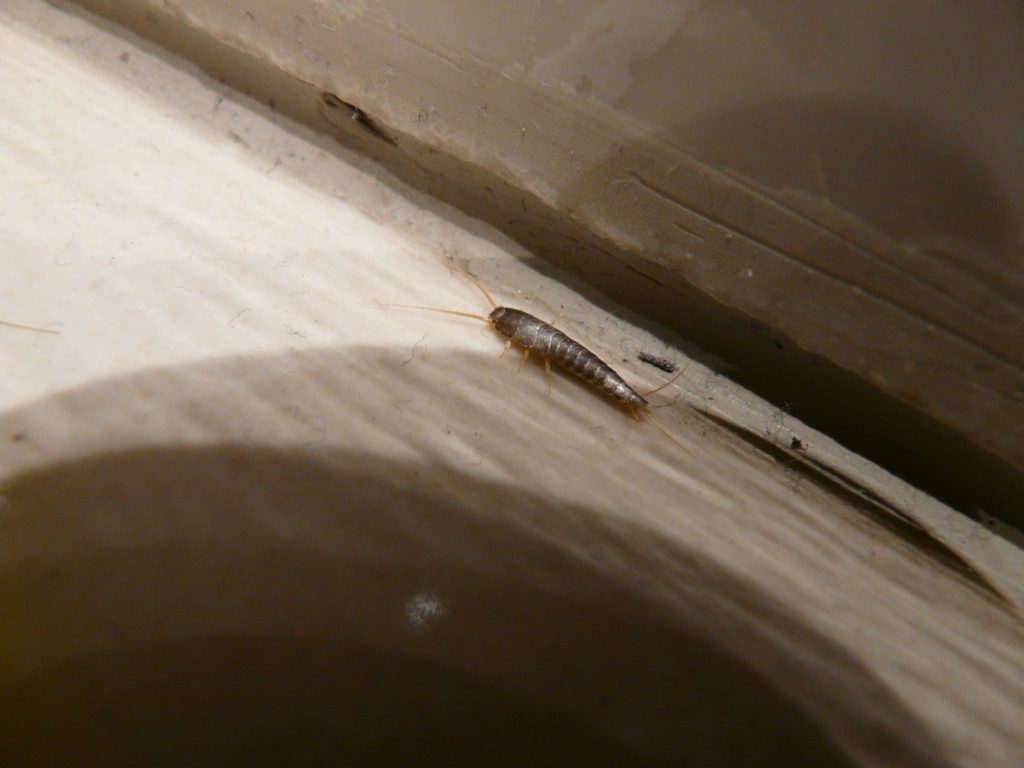Why Are Silverfish in My House
Have you ever come across a silverfish when you least expect it? These small, wingless, and silver-gray insects can be quite a nuisance in our homes. But, why are they present in the first place?
In this blog, we’ll explore the reasons behind silverfish infestations inside houses, as well as some effective methods on how to eliminate them and prevent their reoccurrence. Let’s dive into the world of these uninvited guests and learn about their living habits and characteristics.

What Are Silverfish and Why Are They in Your House?
Silverfish or Lepisma saccharina are harmless insects that belong to the Thysanura family. They are known to thrive in temperatures ranging from 70-85 degrees Fahrenheit (21-29 degrees Celsius). They tend to remain dormant during the day, usually found burrowed deep inside crevices and cracks.
As they have no particular preference of area, silverfish can appear anywhere within a home – be it living rooms, bedrooms, bathrooms, or even attics and garages with shake roofs. Silverfish are drawn to your home because it provides shelter, warmth, and most importantly, food.
Potential Causes of Silverfish Infestations
Several factors could contribute to silverfish infestations in your home. Some of the most common factors include:
Excessive humidity
Silverfish love damp spaces, and a high-humidity environment could be an open invitation for these pests. Bathrooms, kitchens, and basements are some of the most common places where silverfish might be found.
Clutter and untidiness
An unclean and disorganized home creates the perfect hiding spots and breeding grounds for silverfish. Dark, undisturbed corners filled with piles of papers and fabrics are attractive areas for these elusive insects.
Must Read: How to Prepare for Bed Bug Heat Treatment
Poor ventilation
Inadequate or no ventilation could trap moisture inside, creating an environment that encourages silverfish infestations.
How to Get Rid of Silverfish
If silverfish have made their way into your home, you’ll want to take action quickly to minimize the damage they can cause. Here’s how you can get rid of silverfish:
Dehumidify your home
One of the most effective ways to combat silverfish infestations is to make your home less suitable for these insects. A dehumidifier can help lower the humidity levels in your home and make it less attractive to silverfish.
Seal gaps and cracks
Prevent silverfish from entering your home by sealing up any gaps, cracks, and openings around windows, doors, utility lines, or pipes.
Store food properly and maintain cleanliness
Silverfish can survive on crumbs and tiny food particles. Be diligent about cleaning and make sure to store food in airtight containers.
Use insecticides or natural deterrents
There are several products available, such as liquid pesticides, dust, or sticky traps, that can help eliminate silverfish. Alternatively, you can use some natural ingredients, such as diatomaceous earth, boric acid, or essential oils like lavender or eucalyptus oil, as deterrents.
Preventing the Return of Silverfish
Once you have eliminated the silverfish population, it’s essential to take preventive measures to avoid future infestations. This includes:
- Maintaining optimal humidity levels in your house.
- Regularly cleaning and decluttering your home.
- Periodically inspecting and fixing any water leaks, broken vents, or any other entry points for the insects.
- Properly storing fabrics and old books in sealed containers or bags.
- Making use of natural ingredients as repellents.
Bottom Line
Understanding why silverfish invade your home and learning how to eliminate them effectively is crucial in maintaining a comfortable and pest-free environment. If you are dealing with an infestation, contact Rock Pest Control today for the best professional help. We can help you get rid of any silverfish pests as quickly and safely as possible.
Frequently Asked Questions
Symptoms and signs of bed bug bites can vary among individuals, but commonly include inflamed spots, often with a darker spot in the middle. These spots can be itchy and are typically arranged in a rough line or cluster. They are most often located on the face, neck, arms, and hands. Some people may also experience a burning, painful sensation or a raised, itchy bump with a clear center.
Treatment for bed bug bites primarily involves relieving the symptoms. This can include applying a topical cream to alleviate itching and inflammation, taking an antihistamine for allergic reactions, or using a pain reliever for discomfort. If the bites become infected or cause a severe allergic reaction, it’s recommended to seek medical attention. It’s also important to treat the infestation in your home to prevent future bites.
Detecting a bed bug infestation in your home can be challenging due to their small size and nocturnal habits. Early signs may include blood spots on your sheets or mattress, tiny pale yellow eggs or eggshells, and bedbug feces, which appear as black dots about the size of a speck of dust. Frequent bite marks on your skin can also indicate an infestation. If you suspect you have bed bugs, it’s best to contact our company for a professional inspection.
